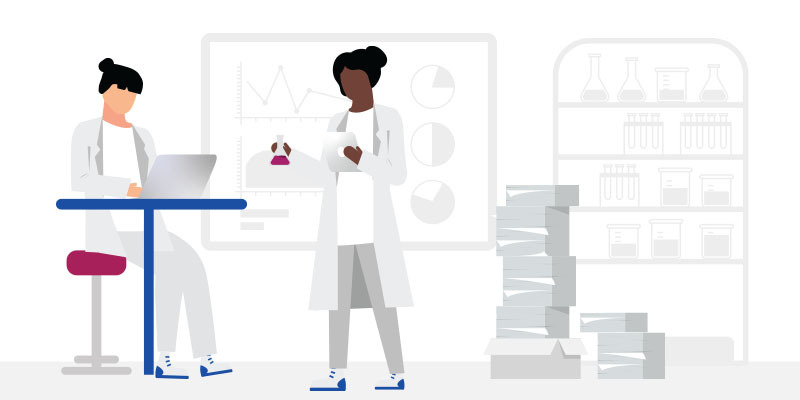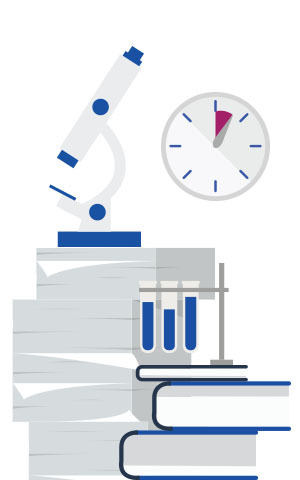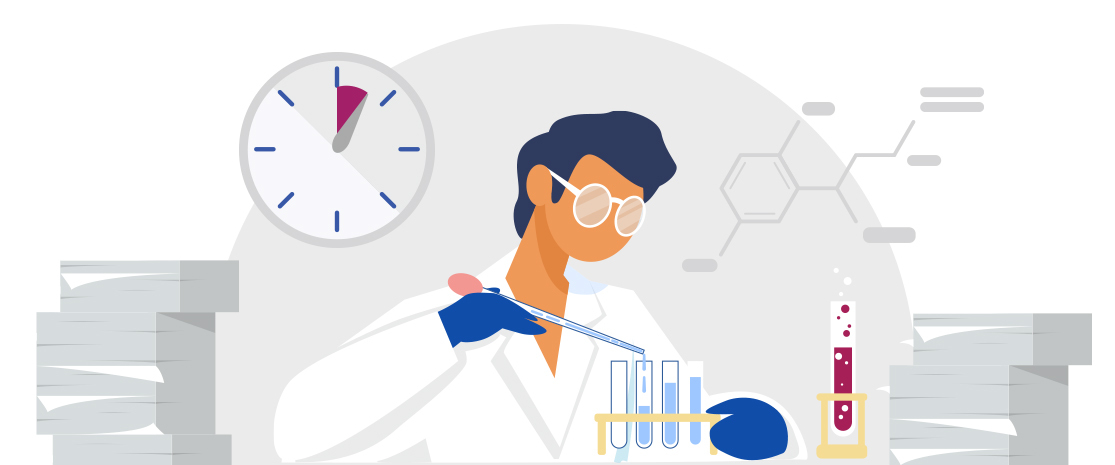We are masters of timekeeping – Why is it difficult to switch from paper to ELN?
![]() 3 min read
3 min read
Our patterns and obsession with documenting things in a timely manner and why it is so difficult to switch to electronic systems for documenting the research and scientific work.
We are all excellent timekeepers. We know very well what’s happening right now. You’re reading these lines. You know exactly what you did earlier and you know very well what you will do after you’re done reading this.
We are very much on track with what we do.
Usually, we do one thing at a time. In a sequence. Even though we might think that we’re multitasking, some proverbially more than others, we’re still doing things one after the other. It might seem that we’re multitasking, but in reality, we’re simply switching from one activity to the next very quickly. So when you look at what you were doing in the past hour or a day, you say: oh, I multitasked. But in reality, you didn’t. Humans excel at doing one thing at a time. That’s our nature and we shouldn’t feel bad about it. For multitasking, we invented parallel computing and multicore processors.
Many of us document what is happening to us in one form or another: as a personal diary, as a public blog, or as posts on our social media platforms. And by default, we do that in the “diary approach”: we document things as they happen, one after the other, in a sequence. In case you are on the more organized side and you like to plan your activities, you usually end up using some type of calendar. Which, again, forces you to think about what you will do at a particular time point in the future.
Because being overbooked usually doesn’t end well (similar to multitasking), the calendar tools help us plan our future in a sequence. Humans are very much aware of their time and we’re masters of timekeeping.
Yes, we are getting to the point, bear with me.

So, what does all this have to do with science and research?
When it comes to documenting our work, many organizations enforce it. We have to document the things we do in great detail. There are plenty of reasons why documenting is beneficial, but that’s not the point of this text. What is important is the fact that we need to document our work.
We need to document our master thesis, our PhD projects, our research on a new mRNA vaccine, our progress on developing a parachute for a rover landing on Mars, our efforts on developing a new molecular biology assay for a new strain of coronavirus, and so on.
And how are we documenting our work?
Well, by default we choose the way we’re used to in our everyday life. It is a system that creeps in so naturally that we don’t even need to think about it: documenting things in the form of a single, continuous, uninterrupted diary. Even our notebooks support this system. Actually, they enforce it, because this is the only way you can document things in a notebook with pagination printed in advance and rules that you can’t tear pages out or insert new ones in.
So, we’re pretty much stuck with dairy, notebook type of documentation. And it feels so natural, it doesn’t require any additional thinking or organizing.
Digital Transformation of the Laboratory: A Practical Guide to the Connected Lab
2021, SciNote LLC, Wiley Inc.
Is this the most organized system? No.
Does my work that is documented in my personal notebook or my personal e-space make it easy to collaborate with my team? Probably not.
Is it FAIR? No.
Is it fair to us? Yes. Because it’s simple.
Is it the most efficient way of documenting? Probably not.
Do we care about all those things? Well, probably not enough. Or maybe, people who care about these things are other people, people who continue our work, people who help us analyze our results.

Then all of a sudden electronic tools come along that do offer other ways of documenting your work. They might have been intentionally designed to offer options of a different type of documentation, organization, and planning of the work.
Are electronic tools a disruption? Sure.
How do we react to disruptions? We avoid them at pretty much any cost because there are plenty of disruptions in our work as it is.
But if we really don’t have a choice and have to use them, we default to applying our comfortable system of sequential, time-bound, diary-type of documenting our work to these tools. We might struggle, with some tools more than others, because some tools might not really be designed in the best way for that kind of approach, while others do a decent job.
But we still persist. Why? Well, other types of documenting our work are a disruption, a change. And by default, disruptions require an investment of additional time and effort to adopt them so they become the new normal.
In this process, we usually need to figure out how to configure the tools, how to “mold them” to our needs but also we usually need to make some changes on our end. This time and energy are taken away from our own existing challenges.
We’re so preoccupied with the content of our work, with all the challenges we have in designing the parachute for Mars, optimizing reaction mixture for the new coronavirus assay, and so on, that we do not have the energy left to invest it into the improvements and innovations of how we do things that will actually save us time in the end.
We admit SciNote is not a conventional notebook converted into an electronic format. It is not an endless piece of paper, that you can break into days, weeks, or months. There are tools out there that do that very well.
We believe that science and research are not organized by the hours of the day, days, or weeks. Sure, work is executed in a timely manner, but we should not confuse the way we do things with the way they are organized.
Each task, a piece of the work we do is part of something bigger, a project of some sort. We do experiments, studies, that have a clear goal, a clear deliverable if you want, and a clear start and end.
Our work often depends on others, we collaborate with our teammates. We learn from our predecessors, take their conclusions, their recipes, their protocols, use them, modify them, improve them and then go on discovering new things, adding value. This structure isn’t exclusive to regulated or industrial labs but it also applies to labs that do basic research, which is by default unpredictable. But it is still structured.
We designed SciNote to set researchers, scientists, engineers free of the confines of diary-based timekeeping. SciNote offers some structure to start with, but also offers a lot of flexibility. So don’t be discouraged.

The best way for you is to find that out by giving it a try. Give it a week or a month. Plan or outline your last or your next project in SciNote, whatever that might be: your next experiment, your improved version of a protocol or standard operating protocol, your results from a recent experiment. Something that is relevant to your work and that you will be able to compare to how you do things now. We know the transition is not smooth sailing. Therefore we’ve designed a new system to help you out when help is the most needed: at the beginning of your new journey.
By Matjaz Hren, PhD
Digital Transformation of the Laboratory: A Practical Guide to the Connected Lab
2021, SciNote LLC, Wiley Inc.



